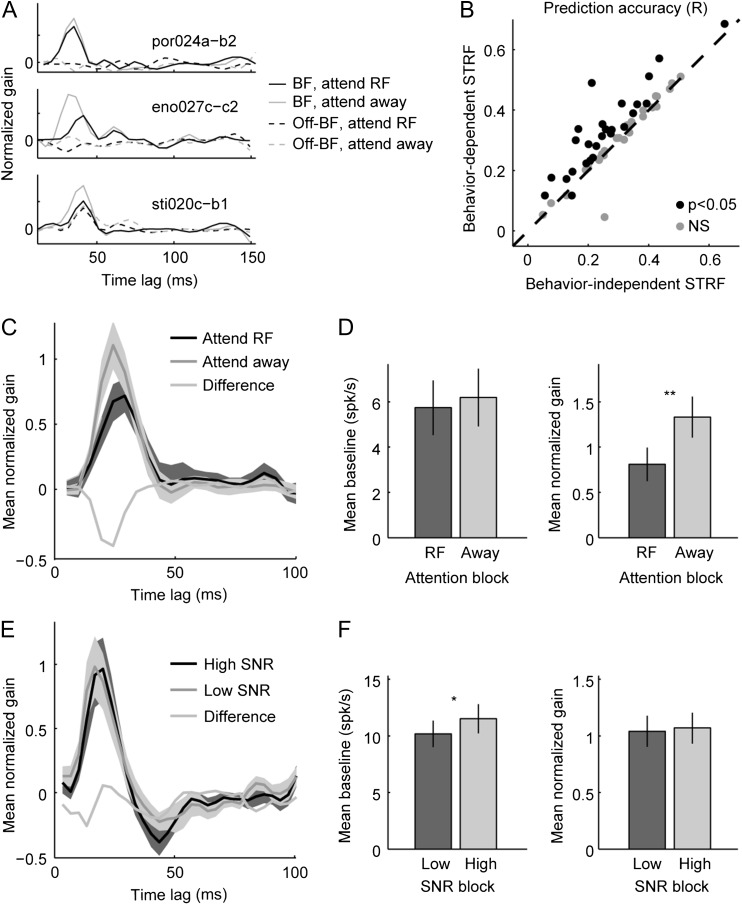Figure 8.
Effects of attention and variable SNR on neuronal filter properties. (A) Comparison of behavior-dependent STRFs for 3 neurons from selective attention experiments, estimated separately using data from attend RF and attend away conditions. In both attention conditions, the temporal filter for the RF channel (solid lines, for the stimulus channel centered in the neuron’s RF) showed excitatory tuning with 0–50 ms time lag. Gain was lower for this channel in the attend RF condition (black vs. gray lines). The non-RF channel (dashed lines) typically showed weaker gain, if any, and no consistent change between attention conditions. (B) Scatter plot comparing prediction accuracy of behavior-independent versus behavior-dependent STRFs across the selective attention data set. Filled dots correspond to neurons with a significant difference in prediction accuracy between models (P < 0.05, sign test). Mean prediction accuracy was higher for the behavior-dependent model (mean r = 0.24 vs. 0.28 for behavior-dependent vs. independent, P < 0.001, n = 54, sign test). (C) Average temporal response function at BF for behavior-dependent STRFs in the attend RF versus attend away condition (n = 26/54 neurons with significant improvement for behavior-dependent model). (D) Mean baseline and peak gain for behavior-dependent STRFs in attend RF versus attend away conditions show a significant difference in gain (**P = 0.007, sign test). (E) Average temporal response functions of behavior-dependent STRFs estimated separately for low- and high-SNR conditions (n = 51/88 with significant benefit for behavior-dependent model). (F) Mean baseline and peak gain for behavior-dependent STRFs in low-SNR and high-SNR conditions shows a significant difference in response baseline (*P = 0.02, sign test).

